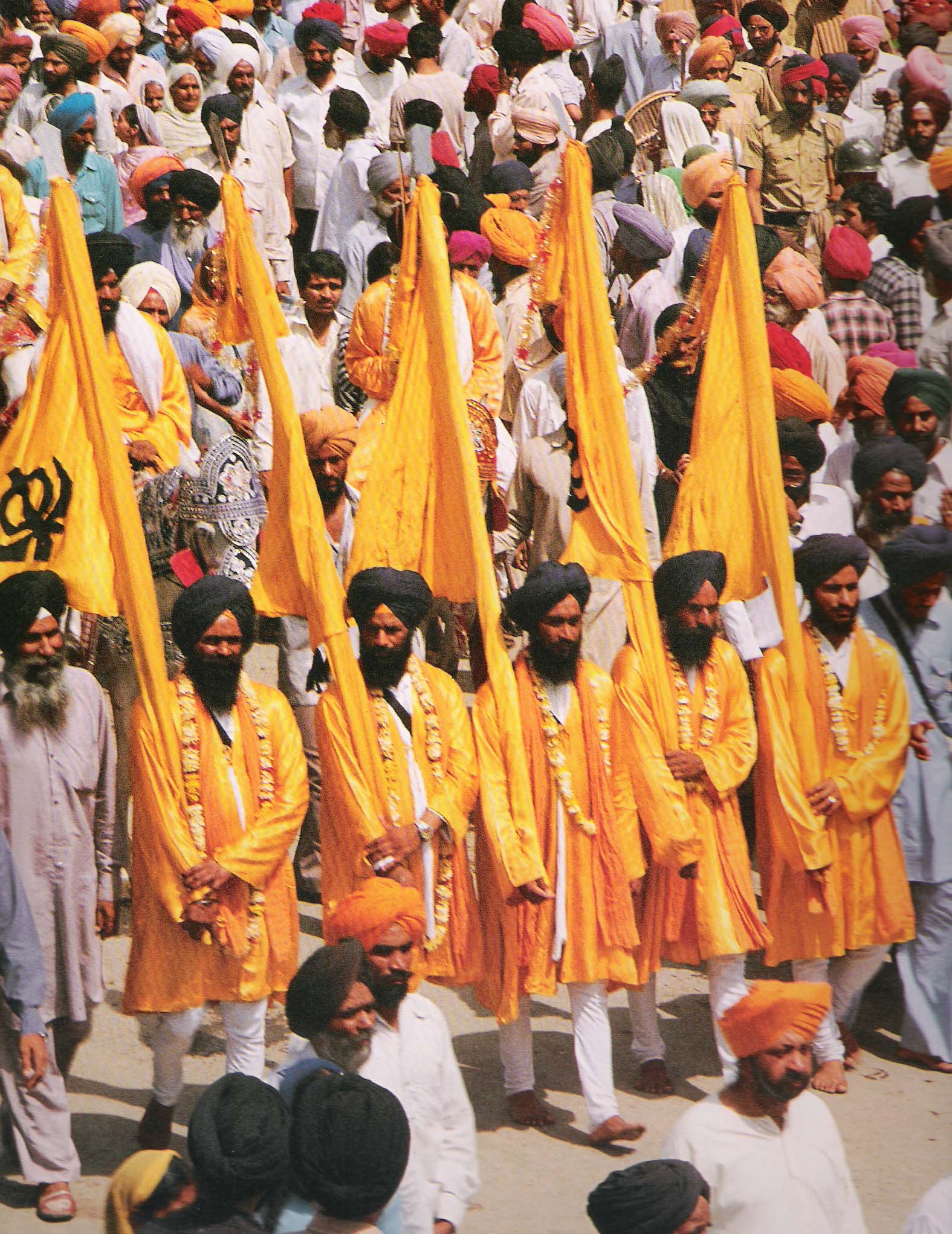|
|
| Line 3: |
Line 3: |
| [[Image:Panj Pyare.jpg|thumb|200px|left|{{cs|The Panj Pyare lead a procession in India}}]] | | [[Image:Panj Pyare.jpg|thumb|200px|left|{{cs|The Panj Pyare lead a procession in India}}]] |
|
| |
|
| '''Panj Piare''' (literally the '''five beloved ones''') is the name given to the five [[Sikh]]s, [[Bhai Daya Singh]], [[Bhai Dharam Singh]], [[Bhai Himmat Singh]], [[Bhai Mukham Singh]] and [[Bhai Sahib Singh]], who were so designated by [[Guru Gobind Singh]] at the historic divan at [[Anandpur Sahib]] on 30 March 1699. These five formed the nucleus of the [[Khalsa]] as the first batch to receive from the Gurus hands the [[Amrit]] or [[khanda di Pahul]], i.e. rites of the two-edged sword. On January 18 every year, the Sikhs celebrate the birthday of [[Bhai Himmat Singh]].
| | ==Duplicate== |
| | |
| | |
| In [[Sikh]] theology, as in the [[India]]n classical tradition generally, [[panj]] or [[panch]], the numeral five, has a special significance. [[Guru Nanak]] in [[Japji]] refers to five [[khand]]s, i.e. stages or steps in spiritual development, and calls a spiritually awakened person a ''panch''. The ancient [[India]]n socio-political institution panchayat meant a council of five elders. Something like an inner council of five existed even in the time of the earlier Gurus: five Sikhs accompanied [[Guru Arjan]] on his last journey to [[Lahore]]; the five were each given 100 armed Sikhs to command by his successor, [[Guru Hargobind]]; [[Guru Tegh Bahadur]], set out on his journey to [[Delhi]] to court execution attended by five Sikhs.
| |
|
| |
|
| {{Aowf|Panj Piare}} | | {{Aowf|Panj Piare}} |

